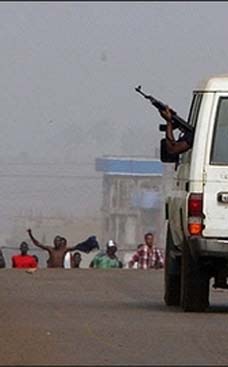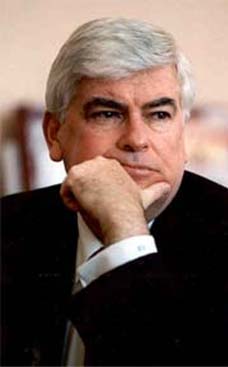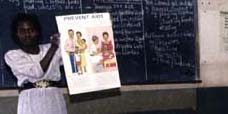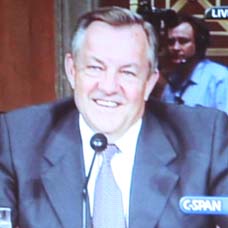2006.11.04: November 4, 2006: Headlines: Appropriate Infrastructure: Sustanable Development: Development: Engineering: World Changing: Appropriate Infrastructure Development Group
Peace Corps Online:
Peace Corps News:
Library:
Peace Corps: Engineering:
Peace Corps Engineering: Newest Stories:
2006.11.04: November 4, 2006: Headlines: Appropriate Infrastructure: Sustanable Development: Development: Engineering: World Changing: Appropriate Infrastructure Development Group
Appropriate Infrastructure Development Group
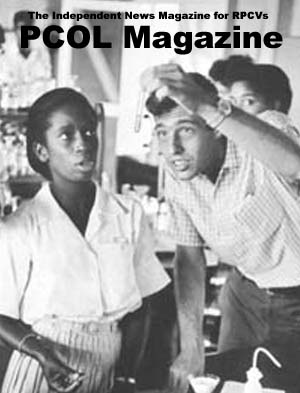
It is a familiar story: post-college volunteer (Peace Corps, etc.) returns from the developing world with a desire to help the community in which he or she has been staying. The subsequent projects are also familiar – they often involve selling local handicrafts to first-world markets, or aggregating donations of used computers and cell phones to send back to the community. I don't question the motivation behind such initiatives, and I applaud some of them for attempting to bolster the local economy or jump-start development with first-world technology. More often than not, however, these small projects operate much like typical top-down development projects; that is, they depend on human and physical capital that only the donor/benefactor can provide. In order for such projects to become truly sustainable, they must be able to stand on their own.
Appropriate Infrastructure Development Group
Appropriate Infrastructure Development Group
Robert Katz
November 4, 2006 6:55 AM
Article Photo
It is a familiar story: post-college volunteer (Peace Corps, etc.) returns from the developing world with a desire to help the community in which he or she has been staying. The subsequent projects are also familiar – they often involve selling local handicrafts to first-world markets, or aggregating donations of used computers and cell phones to send back to the community. I don't question the motivation behind such initiatives, and I applaud some of them for attempting to bolster the local economy or jump-start development with first-world technology. More often than not, however, these small projects operate much like typical top-down development projects; that is, they depend on human and physical capital that only the donor/benefactor can provide. In order for such projects to become truly sustainable, they must be able to stand on their own.
Peter Haas knows this story well, having spent years traveling to and volunteering in low-income communities, where well-intentioned development projects often failed without constant donor intervention. With his first-hand knowledge of the problem, Haas set off to find a solution, founding the Appropriate Infrastructure Development Group (AIDG) in 2004. The AIDG web site describes exactly what it is they do:
The Appropriate Infrastructure Development Group (AIDG) works to provide rural villages in developing countries with affordable and environmentally sound technologies...Through a combination of business incubation, education, training, and outreach, the AIDG helps individuals and communities gain access to technology that will improve their lives. Our model provides a novel approach to sustainable development by empowering people with the physical tools and practical knowledge to solve infrastructure problems in their own communities.
In short, the AIDG tackles infrastructure development – energy generation, clean water, sanitation, cooking – though a combination of locally-appropriate design and small business development. Much like Amy Smith's famous D-Lab at MIT, they work directly with local communities to design technologies appropriate to local needs and conditions. Then AIDG combines the local needs assessment and appropriate design with cutting-edge small enterprise development services. Similar to KickStart, AIDG helps set up locally-staffed workshops to develop, manufacture, and repair the systems. The shops get off the ground with a recoverable grant, financed by the workshops’ profits. These monies are then funneled back through AIDG to start more workshops in new locations, completing the cycle.
Sustainability – of the environment as well as of the model – underpins the entirety of AIDG operations. Its appropriate technologies are explicitly designed to be environmentally sound, such as high-efficiency combustion stoves, solar-powered water heating, animal waste biodigesters, and low-tech, high-efficiency windmills. Creative commons reigns: their designs, technical manuals, and other intellectual capital are available – free of charge – on an AIDG web site. The organization itself is a 501(c)3 non-profit staffed by young, well-educated volunteers and supported by a grant from Echoing Green. They aren't out to make money for themselves, but rather to bolster the economies of the communities in which they work while simultaneously addressing some of the most grievous affects of poverty. All that, and they’re environmentally friendly to boot. If there were ever an organization that single-handedly embodied what it means to be Worldchanging, this is it.
Links to Related Topics (Tags):
Headlines: November, 2006; Development; Engineering
When this story was posted in February 2007, this was on the front page of PCOL:





Peace Corps Online The Independent News Forum serving Returned Peace Corps Volunteers
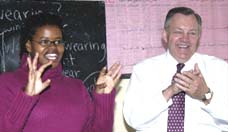 | Ron Tschetter in Morocco and Jordan
On his first official trip since being confirmed as Peace Corps Director, Ron Tschetter (shown at left with PCV Tia Tucker) is on a ten day trip to Morocco and Jordan. Traveling with his wife (Both are RPCVs.), Tschetter met with volunteers in Morocco working in environment, youth development, health, and small business development. He began his trip to Jordan by meeting with His Majesty King Abdullah II and Her Majesty Queen Rania Al Abdullah and discussed expanding the program there in the near future. |
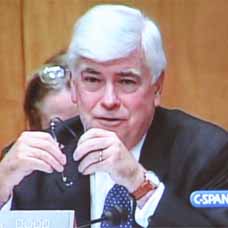 | Chris Dodd's Vision for the Peace Corps
Senator Chris Dodd (RPCV Dominican Republic) spoke at the ceremony for this year's Shriver Award and elaborated on issues he raised at Ron Tschetter's hearings. Dodd plans to introduce legislation that may include: setting aside a portion of Peace Corps' budget as seed money for demonstration projects and third goal activities (after adjusting the annual budget upward to accommodate the added expense), more volunteer input into Peace Corps operations, removing medical, healthcare and tax impediments that discourage older volunteers, providing more transparency in the medical screening and appeals process, a more comprehensive health safety net for recently-returned volunteers, and authorizing volunteers to accept, under certain circumstances, private donations to support their development projects. He plans to circulate draft legislation for review to members of the Peace Corps community and welcomes RPCV comments. |
 | He served with honor
One year ago, Staff Sgt. Robert J. Paul (RPCV Kenya) carried on an ongoing dialog on this website on the military and the peace corps and his role as a member of a Civil Affairs Team in Iraq and Afghanistan. We have just received a report that Sargeant Paul has been killed by a car bomb in Kabul. Words cannot express our feeling of loss for this tremendous injury to the entire RPCV community. Most of us didn't know him personally but we knew him from his words. Our thoughts go out to his family and friends. He was one of ours and he served with honor. |
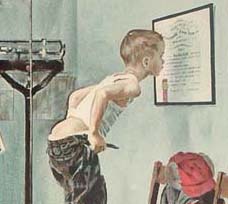 | Peace Corps' Screening and Medical Clearance
The purpose of Peace Corps' screening and medical clearance process is to ensure safe accommodation for applicants and minimize undue risk exposure for volunteers to allow PCVS to complete their service without compromising their entry health status. To further these goals, PCOL has obtained a copy of the Peace Corps Screening Guidelines Manual through the Freedom of Information Act (FOIA) and has posted it in the "Peace Corps Library." Applicants and Medical Professionals (especially those who have already served as volunteers) are urged to review the guidelines and leave their comments and suggestions. Then read the story of one RPCV's journey through medical screening and his suggestions for changes to the process. |
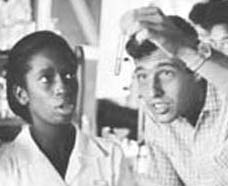 | The Peace Corps is "fashionable" again
The LA Times says that "the Peace Corps is booming again and "It's hard to know exactly what's behind the resurgence." PCOL Comment: Since the founding of the Peace Corps 45 years ago, Americans have answered Kennedy's call: "Ask not what your country can do for you--ask what you can do for your country. My fellow citizens of the world: ask not what America will do for you, but what together we can do for the freedom of man." Over 182,000 have served. Another 200,000 have applied and been unable to serve because of lack of Congressional funding. The Peace Corps has never gone out of fashion. It's Congress that hasn't been keeping pace. |
 | PCOL readership increases 100%
Monthly readership on "Peace Corps Online" has increased in the past twelve months to 350,000 visitors - over eleven thousand every day - a 100% increase since this time last year. Thanks again, RPCVs and Friends of the Peace Corps, for making PCOL your source of information for the Peace Corps community. And thanks for supporting the Peace Corps Library and History of the Peace Corps. Stay tuned, the best is yet to come. |
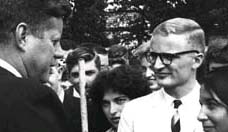 | History of the Peace Corps
PCOL is proud to announce that Phase One of the "History of the Peace Corps" is now available online. This installment includes over 5,000 pages of primary source documents from the archives of the Peace Corps including every issue of "Peace Corps News," "Peace Corps Times," "Peace Corps Volunteer," "Action Update," and every annual report of the Peace Corps to Congress since 1961. "Ask Not" is an ongoing project. Read how you can help. |
Read the stories and leave your comments.

Some postings on Peace Corps Online are provided to the individual members of this group without permission of the copyright owner for the non-profit purposes of criticism, comment, education, scholarship, and research under the "Fair Use" provisions of U.S. Government copyright laws and they may not be distributed further without permission of the copyright owner. Peace Corps Online does not vouch for the accuracy of the content of the postings, which is the sole responsibility of the copyright holder.
Story Source: World Changing
This story has been posted in the following forums: : Headlines; Appropriate Infrastructure; Sustanable Development; Development; Engineering
PCOL35080
93







